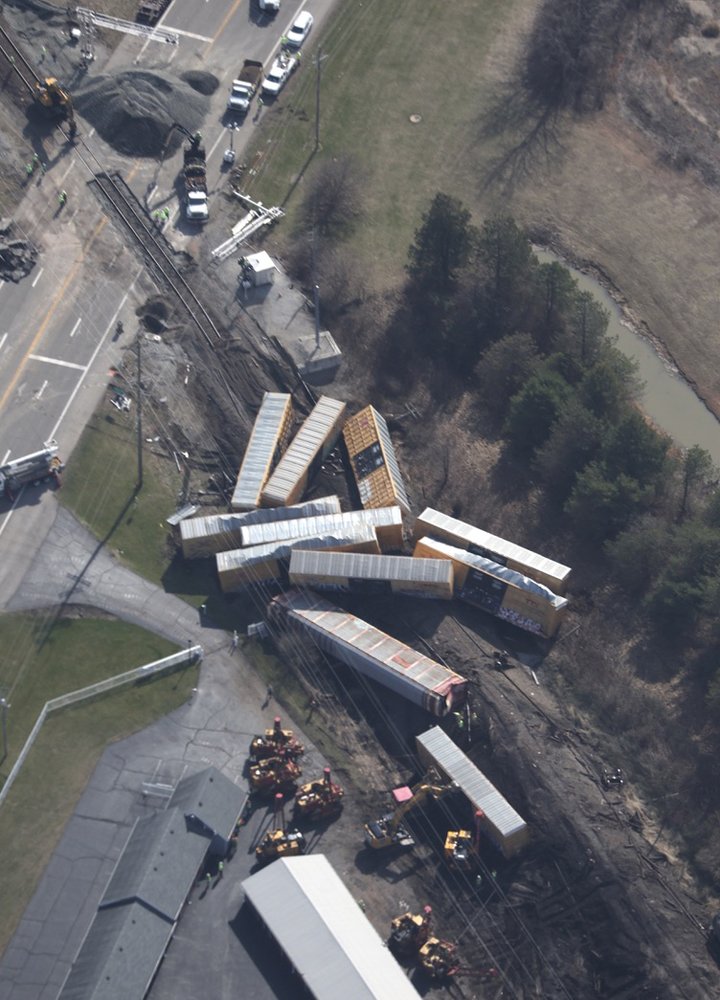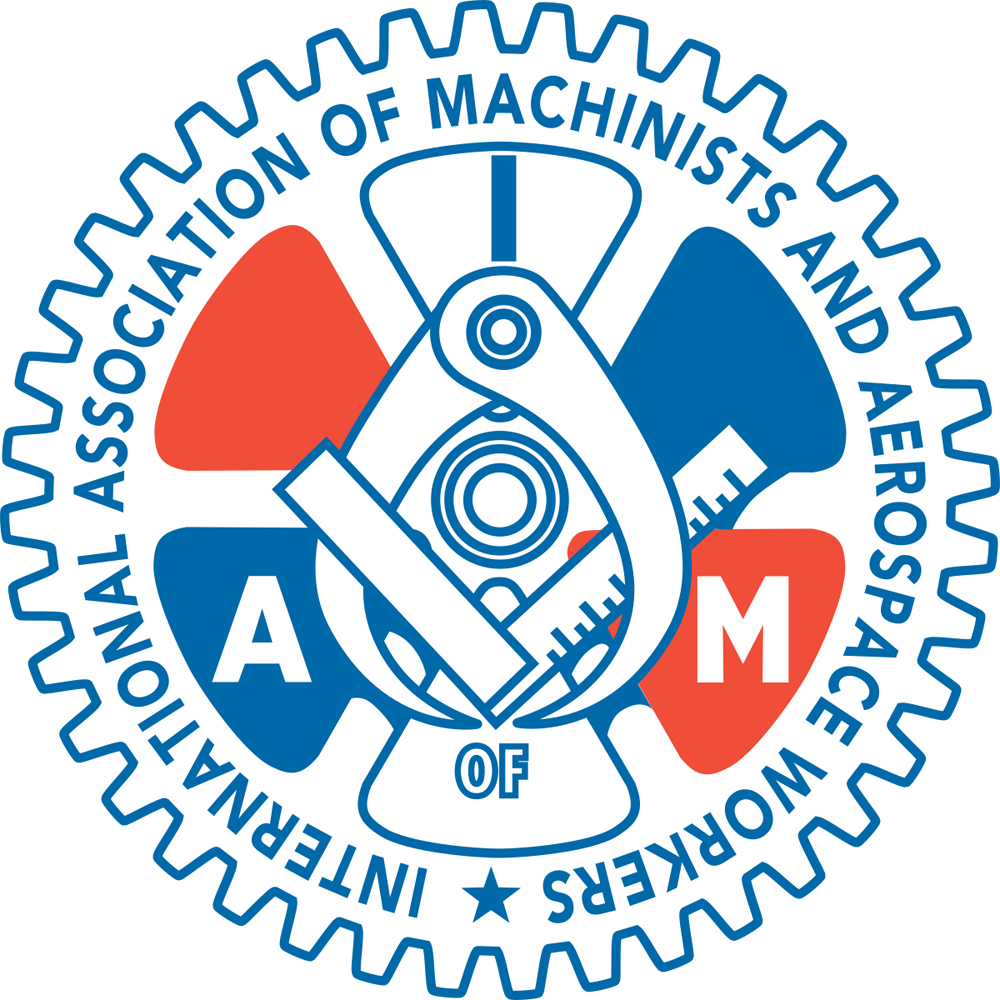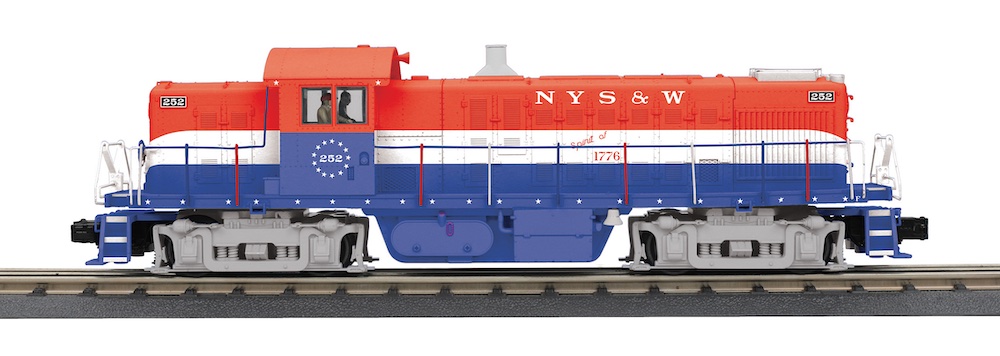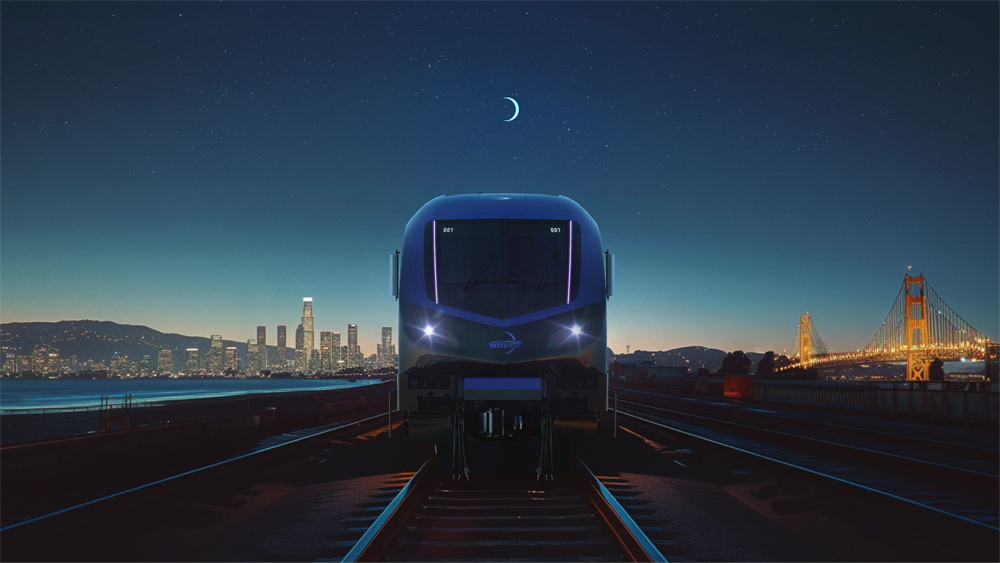
SPRINGFIELD, Ohio — Twenty-eight cars of a Norfolk Southern train derailed near Springfield on Saturday evening, leading to an initial shelter-in-place order from local authorities before it was determined no hazardous-materials situation was involved.
The Associated Press reports that there were no hazardous materials aboard the train and no injuries were involved. Clark County reported that four cars had residual amounts of non-hazardous materials: two with diesel exhaust fluid and two with polyacrylamide water solution, which is used to remove suspended particles from runoff.
NS said the 212-car train was en route from Bellevue, Ohio, to Birmingham, Ala., according to NBC News. A small amount of plastic pellets spilled from one car, but those were not hazardous, according to Ohio Environmental Protection Agency Director Ann Vogel. Cleanup did not begin until Sunday morning because electric lines were involved in the derailment.
The shelter-in-place order for those within 1,000 feet of the derailment site was lifted, while State Route 41 remains closed until further notice.
The train derailed about 5 p.m.
Springfield is about 46 miles west of the state capital of Columbus, and about 180 miles west-southwest of the Feb. 3 site of the Norfolk Southern derailment in East Palestine, Ohio.
— Updated at 5:30 p.m. CST with revised count of number of cars involved, additional details; updated March 6 at 8:45 a.m. with image from derailment cleanup.














212 Cars? That would be almost three miles long… What a freaking joke.
“It’s even funnier the second time!”
I believe the 1000/year number, but I think most of those are small derailments that occur in yards or other low-speed tracks that only involve 1 locomotive or a couple of cars. They are still counted as derailments, however. But I agree with the sentiments expressed above, that EHH was Satan Incarnate to railroad operations and that the insanity of running 10 – 15,000 ft. trains has got to stop. Not to mention that we learned in the 1960s that deferred maintenance to the physical plant causes multitudes of problems, and even with all the modern technology used today there is no substitute for properly maintained track and equipment. The railroads brought this upon themselves and they had better fix it now, lest they risk the heavy boot of re-regulation pressing on their throats. If there should be another East Palastine-type of incident things are going to get really ugly for the Class Ones. I hope they wise up.
We’ve always had catastrophes. Salamanca in Spain, the Greece collision, Amtrak at Dupont (Washington State), Chatsworth in California, Gunpow (Maryland), were tolerable because they occured at intervals of years and the railroads could go back to sleep. No longer, not after East Palestine. The railroads now are being watched.
Hmmm. Is it possible Gomez Adams is now the president of NS?
Who’s Gomez Adams?
Gomez Adams was the husband on the old TV series The Adams Family. He would blow up railroad bridges on a model railroad to make a large train wreck.
There is slack action and buff actions on every train. Maybe each car on a train should have its own value of slack. Add all them up on a train and limit that value to a certain number. As a thought many intermodal trains have many 3 – 4 – 5 packer cars that are built with solid draw bars with no slack. So, speculation but maybe there is less total slack on long intermodals. Granted there are intermodal derailments. So, what are the percentages of train mile intermodals vs. general merchandize trains?
I would think and hope that everybody involved in rail transport would see the colossal failure and disaster that is known as Precision Scheduled Railroading or PSR for short is doing. Derailments and hot boxes and overheated wheels and brake shoes were always part of the rail scene. But now we are seeing more derailments and such an epic scale. Too many cars on a freight train and Im not talking about 100 to 120 cars but if this is true that this latest derailment involved a train of 212 cars this is just getting downright reckless and not very smart. The weight of all those cars pulling and pushing against either other and not to mention the slack and sudden yank and pull on those cars when the train has to stop or start up again and of course those extremely long freights barreling along the tracks at anywhere 100 plus MPH is a receipe for disaster. Only a two man crew up in the lead locomotive operating these extremely long and heavy trains is not the way to enhance or operate safe freight trains. While I don’t suggest going back to the little red caboose at the end of the train, Years ago when the railroads operated these cars, you at least had two maybe three extra pairs of eyes to keep an eye on things in the rear of the train and observe from the cupola anything not in order or amiss. Today while technology has replaced both caboose and manpower with rear end train devices, it is not the solution for these extra long freights. Technology can’t replace human eyes and alertness. This also brings up the fact that the freight railroads in order to keep their Wall Street masters happy in bringing in more profits and dividends for their greedy investors and stockholders have cut back on manpower, tighter and more stringent inspections and checks on freight cars, brakes, air hoses couplers, and wheels and the trucks that the freight cars ride on. Corporate profits, and the need to make money and scrimp and economize on safety and inspections is all that matters. Hence the fiasco of PSR and all the trouble that this maddeness is bringing not only on the rail industry itself but millions of lives that work and live near the tracks. The author and creator of PSR E Hunter Harrison must be laughing to himself from his resting place in Hell on what he unleashed and created. Rest in Hell E Hunter Harrison. You sure brought hell upon the rail industry
Joseph C. Markfelder
A freight train barreling the tracks at 100 mph? In what universe are you living in?
Ian, 1000 derailments last year was stated on NBC news just this evening. Maybe it’s true maybe not but I would not be surprised.
What I found interesting with this derailment is it appears a brand new coil car from NSC appears to be the first car derailed going over the crosssing, same brand new coil cars that derailed a couple weeks ago just outside Toledo.
212 cars???!!!! Ridiculous!!!! Most of the 20 empty? Be curious on hearing more on this.
“The Columbus Dispatch reports that a Norfolk Southern spokesperson confirmed that at least 20 of the 212 cars derailed and said the cars contained no hazardous material and no one was injured.”
Buff and draft issues? Lack of adequate inspection at terminals? Equipment failures? Line-side defect detector issues? Track failures?
Does it seem the magnitude and frequency of derailments has increased? Or is it a function of the 24-hour news cycle?
Maybe a little to long? At 50′ car length it would be 10,600 that’s just a little over 2 miles long. an I think a lot of the cars are well over 50′.
I’ll go with all of the above.
I read somewhere the other day there are 1000 reported derailments a year = 3 a day, most not newsworthy or significant.
But 3 a day will result in the big one eventually.
@Jim Salisbury; 3 a day how long ago? 5 years ago trains over120 cars were rare. Now common place.
I would think a larger train needs more vigilance, as there is more to go wrong.